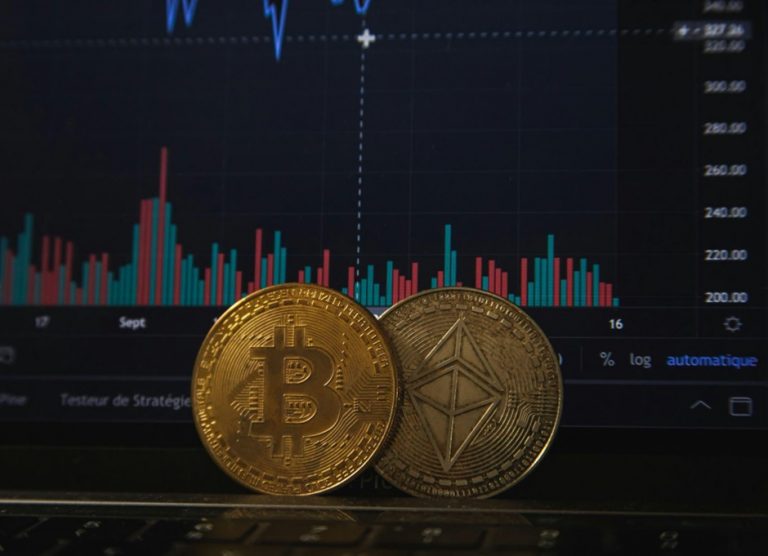
The ETH/BTC ratio recently hit a five-year low, dropping to around 0.018 on April 9, 2025, a level last seen in December 2019. This reflects Ethereum’s significant underperformance compared to Bitcoin, with ETH down about 10% in a single day to roughly $1,400, while BTC fell 6% but held above $75,000. Over the past year, Ethereum has lagged Bitcoin on 85% of trading days, erasing nearly seven years of relative gains.
Factors include Bitcoin’s stronger institutional appeal, driven by spot Bitcoin ETF inflows and its fixed supply narrative, contrasted with Ethereum’s rising supply post-Merge and competition from other blockchains like Solana. Some analysts see Ethereum’s oversold RSI as a potential rebound signal, but others warn of further declines if selling persists.
Bitcoin’s dominance (63%) signals stronger investor confidence in BTC as a store of value, especially amid institutional adoption via ETFs. Ethereum’s weaker performance may reflect doubts about its growth narrative post-Merge. Rising ETH supply (123 million coins, up 3 million since 2022) contrasts with Bitcoin’s fixed cap, diluting Ethereum’s scarcity appeal. Competition from faster blockchains like Solana pressures Ethereum’s market share in DeFi and NFTs.
Register for Tekedia Mini-MBA edition 19 (Feb 9 – May 2, 2026): big discounts for early bird.
Tekedia AI in Business Masterclass opens registrations.
Join Tekedia Capital Syndicate and co-invest in great global startups.
Register for Tekedia AI Lab: From Technical Design to Deployment (next edition begins Jan 24 2026).
A low ratio could signal a buying opportunity for ETH if oversold indicators like RSI hold, but persistent selling pressure risks further declines. Traders may pivot to BTC or altcoins with stronger momentum. Lower ETH prices could strain Ethereum-based projects, reducing developer incentives and dApp activity. However, cheaper gas fees might spur adoption if network upgrades regain traction.
If Ethereum fails to reclaim key support levels (e.g., $1,200-$1,300), bearish sentiment could deepen. Conversely, upgrades like sharding or renewed DeFi interest could reverse the trend, though Bitcoin’s dominance may persist short-term. The crypto market in Q1 2025 faced significant challenges, with Bitcoin recording its worst first-quarter performance in seven years, marked by high volatility and a downward trend. After hitting an all-time high of $108,786 on January 20, 2025, fueled by optimism over pro-crypto U.S. policies, Bitcoin fell to around $75,000 by early April, down 6% on April 9 alone.
The global crypto market cap hovered around $2.65 trillion, slightly down from $2.7 trillion a week earlier. Ethereum (ETH) performed worse, dropping 46% year-to-date to ~$1,400, with the ETH/BTC ratio at a five-year low of 0.018. Solana (SOL) fell 36%, while XRP showed resilience, up 2.22% year-to-date. Altcoins and meme coins generally saw steeper losses than Bitcoin, resetting momentum to mid-2024 levels.
Key drivers included macroeconomic fears, renewed U.S. tariff concerns impacting global markets, and Ethereum’s struggles with rising supply and competition from faster blockchains like Solana. Despite Bitcoin ETF inflows, institutional enthusiasm has cooled slightly, though stablecoin market caps surged past $200 billion, signaling growing adoption. Crypto Analyst’s expect moderate Bitcoin growth around mid-to-late 2025, potentially reaching $126,000-$185,000, driven by stablecoin and DeFi expansion.
Ethereum’s outlook is less certain unless network upgrades regain traction. The market remains volatile, with sentiment on reflecting caution but some optimism for a rebound if trade tensions ease. Ethereum topping Solana in monthly DEX trading volume for the first time in March since September, 2024 carries several implications for the crypto ecosystem, particularly in the DeFi space. This resurgence underscores Ethereum’s enduring appeal as the foundational blockchain for DeFi.
Despite competition from faster, cheaper alternatives like Solana, Ethereum’s deep liquidity, established infrastructure, and vast developer community continue to give it an edge. The high trading volume suggests users and liquidity providers still trust Ethereum’s ecosystem, even with its higher gas fees and slower transaction speeds compared to Solana. Solana’s earlier dominance was partly driven by speculative memecoin trading and its scalability advantages. Ethereum reclaiming the lead might indicate a cooling of that hype or a return to fundamentals, with users prioritizing battle-tested protocols (e.g., Uniswap, Curve) over newer, riskier platforms.
It could signal a maturing market where reliability trumps short-term cost efficiency. Ethereum’s volume boost may also reflect growing adoption of its Layer 2 (L2) scaling solutions like Arbitrum and Optimism, which reduce costs while leveraging Ethereum’s security. If L2s are driving this uptick, it strengthens the narrative that Ethereum’s multi-layered ecosystem can compete with monolithic high-throughput chains like Solana.
For Solana, this could be a temporary dip rather than a long-term decline. Its lower fees and high speed still make it attractive, especially for retail traders and niche DeFi applications. However, it might need to diversify beyond memecoin-driven activity to maintain consistent volume leadership, especially if Ethereum continues to improve scalability via upgrades like sharding in the future.
This shift could influence investor perceptions and capital flows. Ethereum’s outperformance might bolster confidence in ETH as a store of value and utility token, potentially impacting its price relative to SOL. Developers and projects may also double down on Ethereum compatibility, reinforcing its dominance in smart contract platforms.



